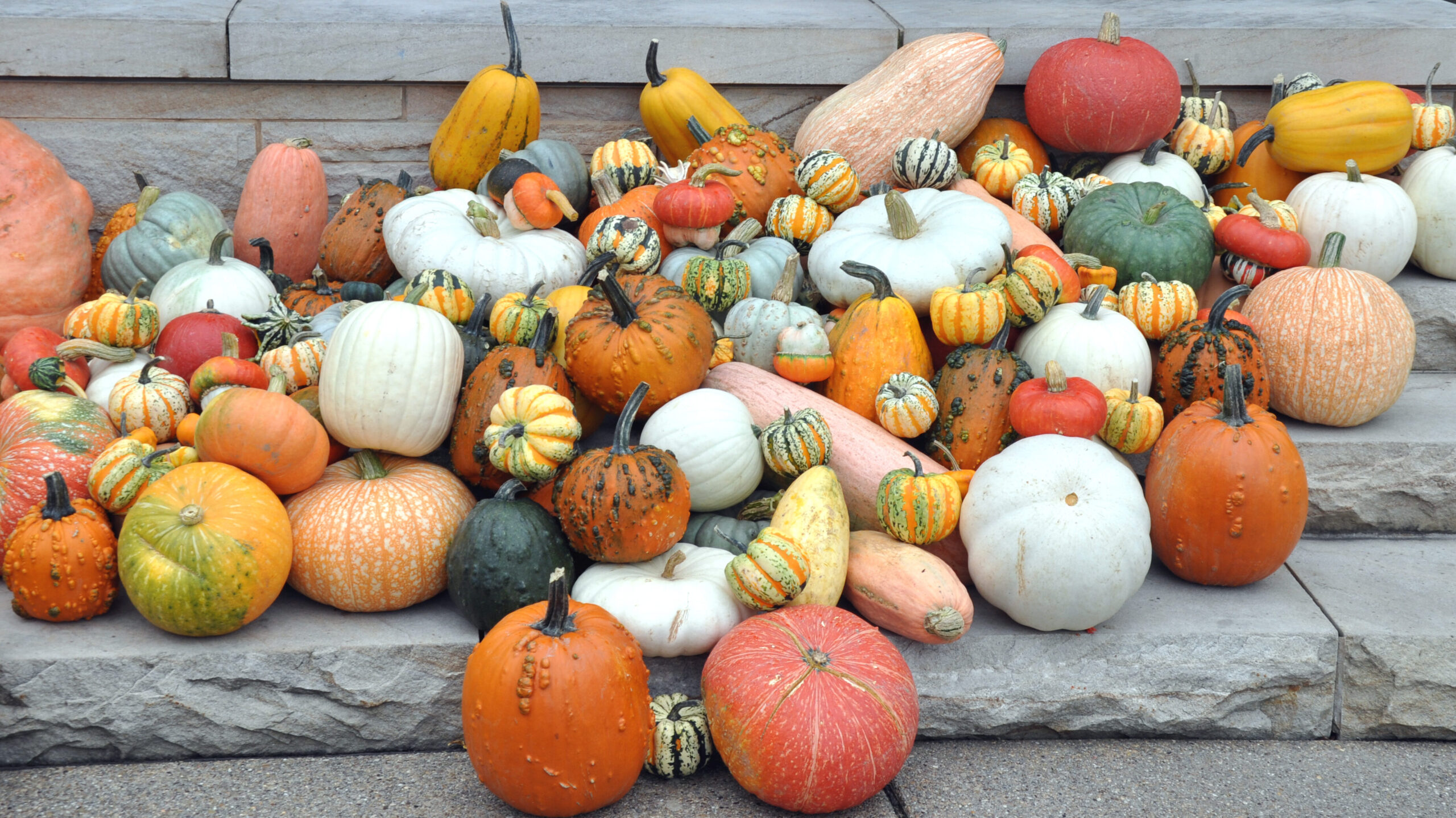
We are crazy for cucurbits! If you are a fan of autumn and all things harvest season, then you are likely also a fan of the Cucurbitaceae family, which includes squash (pumpkins and gourds included), cucumbers, and melons. Cucurbitaceae consists of roughly 975 species of plants across 98 genera utilized for their agricultural and commercial value as well as their ornamental qualities. Members of this family are primarily herbaceous annuals (sometimes biennial or perennial) and are sensitive to freezing temperatures. They are fast growing and will form a long vine. Most species have white or yellow unisex flowers. In general, they have low nutrient content, except for certain varieties such as those in the genus Cucurbita which are high in beta-carotene, magnesium, vitamin A, and potassium.
The Cucurbita genus includes pumpkins and gourds, which, botanically speaking, are all types of squash, sometimes referred to as winter squash. Cucurbita maxima, Cucurbita moschata, and Cucurbita pepo are the most well-known pumpkin species. The fruit in most species is a fleshy berry with a tough rind and contains many flat seeds. They come in a variety of shapes, textures, sizes, and colors, with many growing to a considerable size.
Each season, our horticulture team selects, grows, and harvests all of the Arboretum’s decorative pumpkins and gourds along with the help of our dedicated volunteers! As you stroll along the Arboretum’s gardens this fall, take note of the diversity of squash included in our seasonal displays and see if you can recognize the distinctive characteristics between species!
What’s on Display?
Cucurbita maxima ‘Blue Ballet’
A Hubbard squash, ‘Blue Ballet’ is small and sports smooth, blue-gray skin. The flesh is fiberless and sweet. It’s an excellent addition to decorations or great for desserts.
Cucurbita maxima ‘Blue Ice’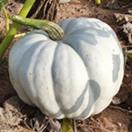
Weighing up to 20 pounds, ‘Blue Ice’ is large, smooth, and round. The skin is blue-gray and is striking in fall displays. It has thinner ribbing and stores exceptionally well. The flesh is very sweet, making it great for desserts, pies, and other culinary dishes.
Cucurbita maxima ‘Porcelain Doll’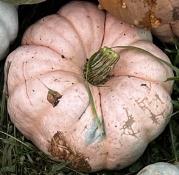
These pumpkins are lumpy, deeply ridged, blocky, and can weigh up to 20 pounds. They’re pale peachy-pink, deer-resistant, and their vines have lots of foliage that’s disease-resistant. The orange flesh is sweet and has delicate honey notes, perfect for pies, soups, and many other recipes.
Cucurbita pepo ‘Tandy’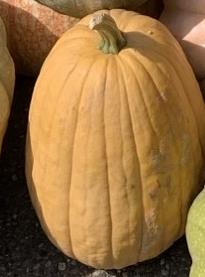
‘Tandy’ is an oblong, almost egg-shaped pumpkin that sits upright. They average 5 to 8 pounds. Ribbing has modest definition, and the skin boasts a dark cream color. They are great ornamental pumpkins and their sweeter-tasting flesh is good for canning and pies.
Cucurbita pepo ‘Jill Be Little’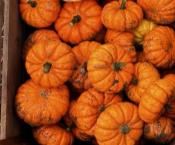
A disease-resistant mini ornamental pumpkin. ‘Jill Be Little’ is flat in shape with wide, deep ribs and a soft orange color. They are great for table-top and window displays, as they only measure 3 to 4 inches in diameter, and can serve as a finishing touch for any fall decoration or craft project.
Cucurbita maxima ‘Flat Stacker’
A hybrid derived from the ‘Flat White Boer’ variety, these pumpkins have deep ribbing and a distinctive squatted shape. They typically weigh 10 to 17 pounds with short stems. They are ivory-colored and are perfect for displays. The flesh is sweet with nutty undertones, perfect for many different culinary dishes.
Cucurbita maxima ‘Speckled Hound’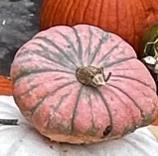
Another hybrid and a newer member of the family, ‘Speckled Hound’ is a variety with a unique flatness that makes it box-like in shape. The skin has a base color of salmon pink and has splotches of blue-green to turquoise cascading down its shallow ribs. Golden flesh has the texture of butternut squash and a flavor that’s been compared to sweet dumpling squash.
Cucurbita moschata ‘Long Island Cheese’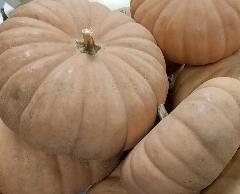
Originating from Long Island, NY, ‘Long Island Cheese’ is an old species of heirloom. They are flat and squat in shape, like a wheel of cheese, and have thick ribbing. The tan-colored pumpkin develops a very thick rinds that protects the flesh, which can be used for pies, pastries, and other fall treats.
Cucurbita pepo ‘Duchess’
‘Duchess’ has a double-ribbed appearance, creating a stunning effect in the evening as shadows accentuate the pumpkin’s deep ribs. It is bright orange in color and has strong disease-resistance.
Cucurbita pepo ‘Orangita’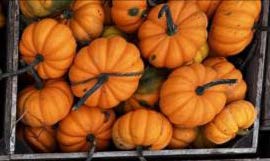
An attractive mini pumpkin with a name that is Spanglish for “little orange,” ‘Orangita’ is great for fall displays. The orange color is incredibly vibrant and the fruit has a smooth surface with deep ribbing. Used for ornamental purposes, the little pumpkins can also be hollowed out and used as serving bowls for soups and bisques.
Cucurbita pepo ‘Mellow Yellow’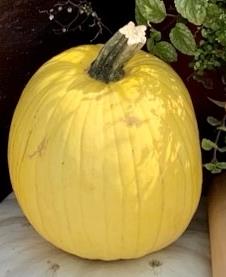
A newer species, ‘Mellow Yellow’ is round and blocky in shape, weighing up to 22 pounds. The flesh is stringy and less desirable but is still edible. What’s striking about this pumpkin is its bright lemon-yellow color that will brighten up any fall display.
Cucurbita maxima ‘Jarrahdale’
Drum-shaped and slate-gray, Jarrahdale is an attractive squash with heavy, rounded ribs. The sweet and thick flesh is great for roasting and baking. This is a variety that will store for a long time though the winter months.
Cucurbita maxima ‘Sunshine’
Compared to some other varieties ‘Sunshine’ is bright and delicious. They have deep orange skin and likewise orange, sweet flesh. Excellent for baking, mashing, and pies.
Cucurbita pepo ‘Gumdrop’
‘Gumdrop’ has a petite, whimsical shape, and a big, sturdy stem. The species averages around 11 to 13 pounds, making them an ideal size for kids. They have a rich, bright orange color great for accenting fall displays.
Cucurbita maxima ‘Polar Bear’
An extra-large pumpkin, ‘Polar Bear’ retains its white color after maturity in decorative displays. It will typically weigh 30 to 65 pounds, but in some cases can exceed 100 pounds. A wonderful accent in fall displays.
Cucurbita pepo ‘Knuckle Head’ Super Freak™ Series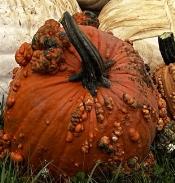
A hybrid variety, ‘Knuckle Head’ is most notable for its warty bumps. The pumpkin itself is usually orange, but the bumps can be orange or green. They’re edible and are typically used in baked goods, soups, desserts, or boiled. Seeds are delicious when roasted, and they can even be dehydrated to make pumpkin chips. ‘Knuckle Head’ is commonly used for displays as it will make a great jack-o-lantern.
Cucurbita pepo ‘Blaze’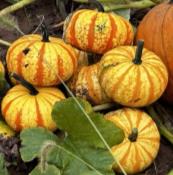
Brightly colored, striped, and perfectly packaged into a compact, slightly-flattened package, ‘Blaze’ is a popular ornamental choice known for its high yield and disease resistance.
Cucurbita pepo ‘Grizzly Bear’ Super Freak™ Series
‘Grizzly Bear’ weighs in at around 6 to 10 pounds and stands out with its tan-orange and notably warty appearance, which is its most desired trait, as this variety isn’t known for its edible qualities.
Cucurbita maxima ‘One Too Many’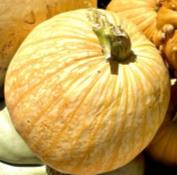
Beautifully unique, ‘One Too Many’ is light cream to antique white in color with orange-red veining. They will range in shape, typically either round, slightly flat, oblong, or a combination. Commonly used in fall displays.
Cucurbita pepo ‘Specter’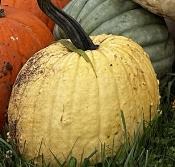
‘Specter’ is a round pumpkin with a cream/ivory color. The skin is hard and has sporadic bumps on the surface. It can weigh up to 20 pounds and makes for a great textural addition to a fall display.
Cucurbita maxima ‘Boston Marrow’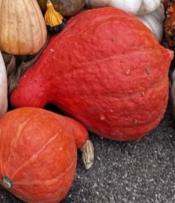
This squash variety is versatile and can be used for cooking and eating when tender and smaller in size, while larger sized specimens (up to 9 pounds) are best for jack-o’-lanterns and display. Its bright orange or bluish-pink skin is noticeably thin however and can be damaged fairly easily compared to other winter squash varieties.
Cucurbita maxima ‘Zeus’
A vibrant and bright orange variety, ‘Zeus’ is a sturdy and glossy pumpkin that can get up to 20 pounds. Excellent for carving jack-o’-lanterns with strong and thick green stems.
Cucurbita pepo ‘Gill’s Golden Pippin’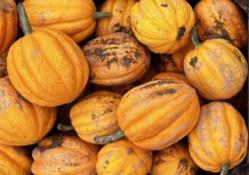
‘Gill’s Golden Pippin’ is an heirloom acorn squash variety that has been voted the sweetest and best-tasting of all acorn squash varieties. Their petite size and bright yellow-orange color also makes them great for decorations.
Cucurbita pepo Daisy Gourd Mix
This decorative gourd mix is named for its unique daisy-like pattern that is observed from the stem end of each fruit. Pattern and color is variable and can include shades of yellow, orange, green, cream, and white.
Cucurbita moschata ‘Pennsylvania Dutch Crookneck’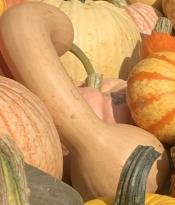
‘Pennsylvania Dutch Crookneck’ lives up to its name. The butternut-type squash is shaped like a turkey neck, long and curved. Commonly used for decorations, but it has sweet, creamy, smooth flesh that is tasty.
Cucurbita pepo Autumn Wings Gourd Mix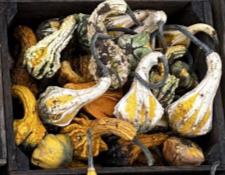
This brightly colored gourd mix is purely ornamental and they are commonly displayed in groupings as they weigh under a pound each. Winged and warted in various shapes, these would work perfectly in a cornucopia or harvest decor tablescape.
Cucurbita maxima ‘Strawberry Crown’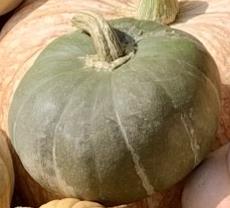
This variety was originally found in Brazil. They are an early grower and develop a gray-brown color that turns bluish or pinkish. The ribs are subtle with bright tiger stripes along them. ‘Strawberry Crown’ is not very sweet, so it’s best used for soups and stews.

